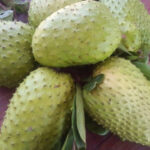A deeper look at the differences between these two types of pork can help you make a more informed choice for your meals.

Should You Choose “Red” or “Light” Pork?
“Red” Pork
Identification Guide:
Red pork usually has a deeper red or pink color compared to other meats. It tends to be marbled with fat, featuring white streaks running through the meat. The distinctive feature of this type of pork is the even distribution of fat, resulting in tenderness and a rich flavor.
Red pork is characterized by its full-bodied flavor and tenderness, making it ideal for dishes that require a juicy and savory taste, such as stews, grilled dishes, or stir-fries.
The fat in this type of pork helps keep the meat moist, enhancing its appeal and flavor. Additionally, the marbling ensures that the meat retains moisture during cooking, resulting in a smooth and juicy texture.
“Light” Pork
Identification Guide:
Light pork is lighter in color, often a pale pink or almost white. This type of pork is leaner, with a neat texture and minimal white fat between the muscle fibers. Light pork usually has a consistent color and structure, giving it a cleaner and fresher appearance.

Tips for Choosing the Best Pork
Light pork is perfect for those aiming to reduce fat and calorie intake. It is highly suitable for light dishes such as stir-fried vegetables, boiled pork, or hot pot meals.
Because it is leaner, light pork can become drier during cooking. Therefore, pay attention to cooking time and techniques to ensure the meat doesn’t become too dry and tough.
Things to Consider When Buying Pork
Source: Opt for trusted sources that ensure sanitary and safe food practices. Fresh, high-quality pork should have consistent coloring without any signs of spoilage.
Aroma: Fresh pork should have a mild, pleasant aroma without any hint of rancidity or sourness. Avoid purchasing pork with an unusual smell to safeguard your health.
Texture: When selecting pork, pay attention to its texture. The meat should have a uniform texture, neither too soft nor too dry. Consistency in texture indicates freshness and superior quality.
The choice between red and light pork depends on your personal preferences and culinary needs. If you prioritize flavor intensity and tenderness, red pork is the way to go. On the other hand, if you seek a leaner, healthier option suitable for light dishes, light pork is the right choice. Understanding the characteristics and benefits of each type will enable you to make informed decisions and add variety to your daily menu.



































